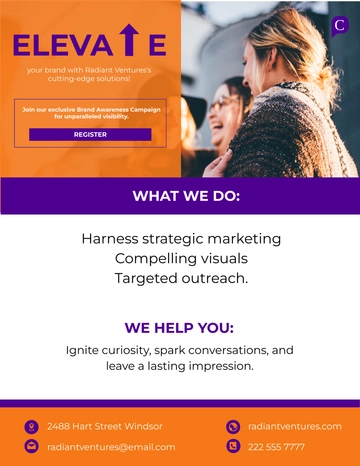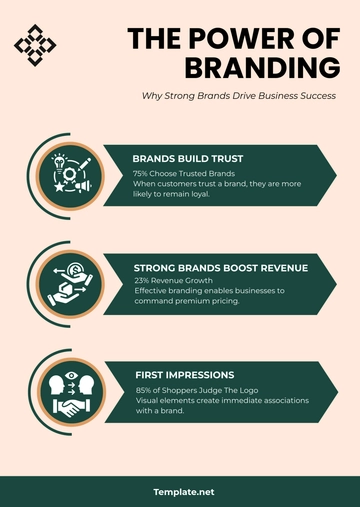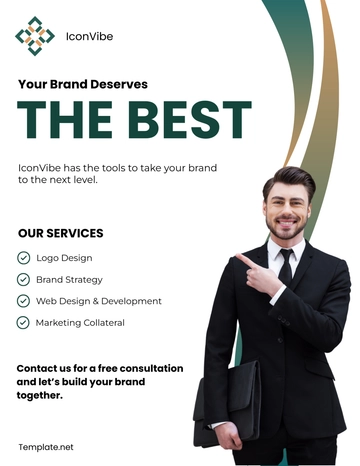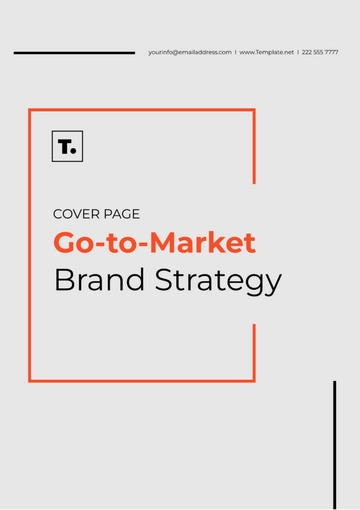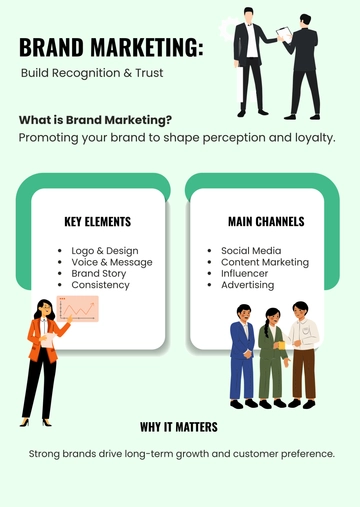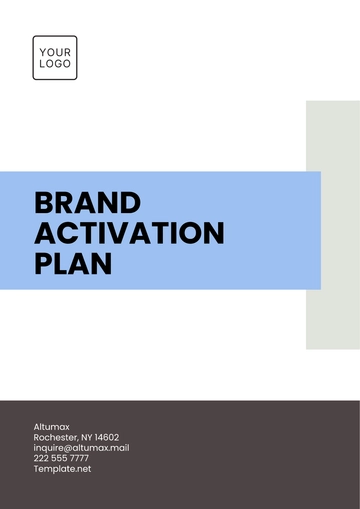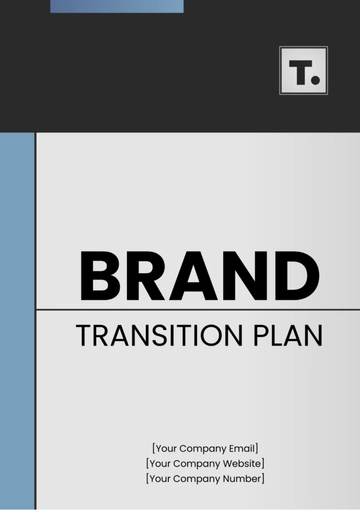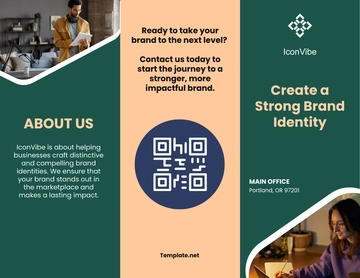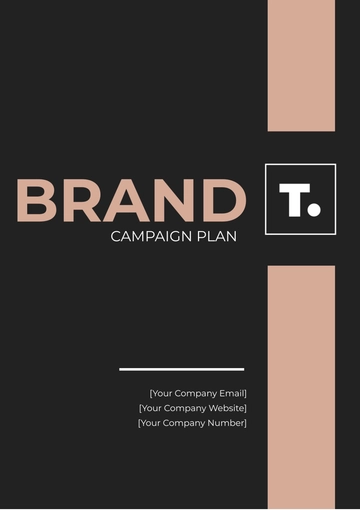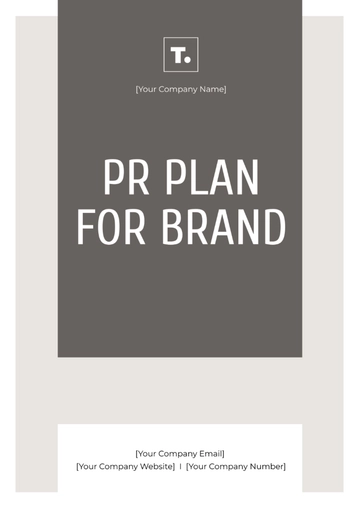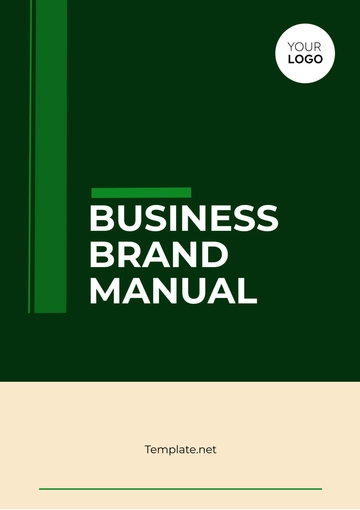Free Comprehensive Brand Advertising Strategy Document
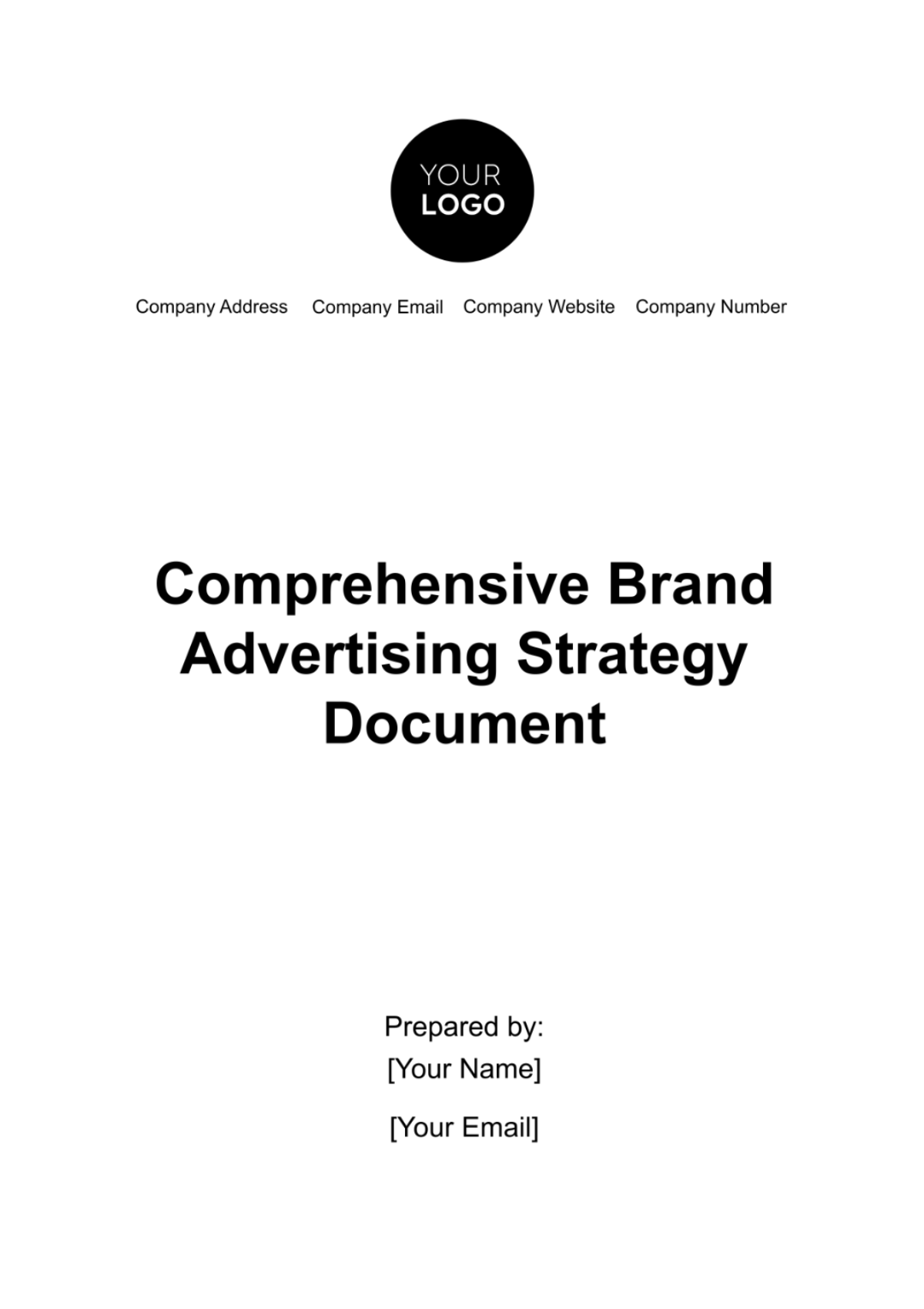
1. Brand Overview
Vision:
[Your Company Name] envisions a world where individuals seamlessly integrate fitness into their lifestyles, empowering them to achieve their health and wellness goals effortlessly.
Mission:
Our mission at [Your Company Name] is to revolutionize the fitness experience by providing innovative equipment and personalized training services. We strive to inspire and support individuals on their fitness journeys, making wellness accessible, enjoyable, and sustainable.
Values:
Quality Excellence: We are committed to delivering premium-quality fitness equipment and services that exceed industry standards, ensuring the best experience for our customers.
Customer-Centric Approach: Our customers' needs and aspirations are at the core of everything we do. We aim to build lasting relationships by understanding, anticipating, and fulfilling their fitness requirements.
Innovation and Adaptability: We embrace innovation to continuously improve our products and services, staying ahead of evolving fitness trends and technologies.
Empowerment and Support: We empower individuals to take charge of their health by providing guidance, expertise, and unwavering support throughout their fitness journeys.
Community and Collaboration: We believe in fostering a supportive fitness community where individuals can connect, share experiences, and motivate each other to achieve their fitness goals.
Brand Promise:
At [Your Company Name], we promise to be the catalyst for positive change in our customers' lives, offering exceptional fitness solutions and unwavering support on their path to a healthier lifestyle.
Brand Personality:
[Your Company Name] embodies an energetic, supportive, and forward-thinking personality. We're passionate about fitness, encouraging progress, and celebrating achievements, fostering a vibrant and inclusive community.
Unique Selling Proposition (USP):
[Your Company Name] distinguishes itself through the fusion of cutting-edge technology, personalized guidance, and a commitment to delivering exceptional fitness experiences that inspire lasting lifestyle changes.
2. Business Goals and Objectives
The objectives of our advertising campaign are carefully designed to ensure that [Your Company Name] not only meets but exceeds its growth and engagement goals in the year [0000]. These objectives serve as milestones guiding our strategies and efforts throughout the campaign.
2.1. Increase Sales by [00]% Within the Next Fiscal Year:
Objective 1: Enhance marketing efforts to promote new product lines and services, targeting specific customer segments identified through market analysis.
Objective 2: Expand distribution channels by partnering with additional retailers or exploring e-commerce opportunities to reach a wider audience.
2.2. Expand Market Presence and Brand Awareness Among New Demographics:
Objective 1: Conduct market research to identify and understand new demographics, including different age groups, geographic locations, or lifestyle segments.
Objective 2: Develop targeted advertising campaigns tailored to resonate with these identified demographics through selected channels.
2.3. Establish [Your Company Name] as a Premier Brand for Fitness Equipment and Personalized Training Services:
Objective 1: Elevate brand perception through consistent messaging highlighting product quality, innovation, and exceptional service.
Objective 2: Showcase success stories and testimonials from satisfied customers to reinforce the brand's credibility and expertise.
Each of these objectives is integral to the overarching goal of reinforcing [Your Company Name]'s position in the market and paving the way for future growth and success.
3. Target Audience
Identifying and understanding our target audience is a cornerstone of our advertising campaign. By clearly defining who we are communicating with, [Your Company Name] can tailor its advertising efforts to resonate more effectively with these groups, ensuring that our messaging is both relevant and impactful.
Primary Demographic
Our primary demographic is a key focus of our campaign. This group represents the core consumer base of [Your Company Name] and is expected to respond most positively to our advertising efforts.
Aspect | Details |
Age Group | 25-45 years |
Interests | Technology, Health and Wellness, Sustainable Living, Outdoor Activities |
Geographic Location | Urban areas with access to fitness centers or at-home workout spaces. |
This demographic is characterized by a keen interest in technology and a lifestyle that prioritizes health and wellness. They are environmentally conscious and enjoy outdoor activities. Geographically, they are predominantly based in urban and suburban areas, reflecting a market with substantial purchasing power and a propensity for staying updated with current trends and innovations.
Such specific details help in crafting targeted advertising strategies that resonate with the core values, interests, and lifestyles of this demographic, ensuring a higher engagement and conversion rate for [Your Company Name].
This demographic is selected based on their potential buying power, alignment with our product or service offerings, and their likelihood of becoming brand ambassadors. By targeting this group, we aim to solidify our market position and cultivate a loyal customer base.
Secondary Demographic
In addition to our primary audience, we also aim to reach secondary demographic groups. These groups, while not the primary focus, represent significant opportunities for market penetration and brand expansion.
Aspect | Details |
Age | 18-24 years old |
This detailed breakdown provides insights into the demographics, behaviors, preferences, and media consumption habits of [Your Company Name]'s primary and secondary target audiences, aiding in crafting more tailored and effective marketing strategies.
Though their interaction with our brand might differ from our primary demographic, these groups are valuable for diversifying our customer base and exploring new market segments. Tailored strategies will be employed to engage these groups, ensuring that our campaign has a broad yet focused appeal.
By strategically targeting these demographics, [Your Company Name] aims to maximize the impact and reach of our advertising campaign, fostering stronger connections with a diverse range of consumers.
4. Advertising Channels
The selection of advertising channels plays a pivotal role in effectively reaching and engaging target audiences. [Your Company Name] aims to deploy a diverse and strategic mix of advertising channels to maximize brand visibility, connect with key demographics, and drive meaningful engagement. This section delineates the meticulously curated approach encompassing social media platforms, online advertising avenues, strategic event sponsorships, and collaborations with influential voices in the fitness sphere.
Social Media Platform
Rationale | Ideal for visual content showcasing fitness equipment, workout routines, and success stories. |
Online Advertising
Google Ads | |
Rationale | Targeted advertising to capture potential customers actively searching for fitness equipment or personalized training services. |
Budget Allocation
Phase | Duration | Key Activities | Allocation Use |
Social Media Platforms | 40% | Sponsored posts, stories, and influencer collaborations to promote products, testimonials, and engaging content. | |
5. Timeline
Phase | Duration | Key Activities |
Quarter 1 | Jan 2050 - March 2050 | Conduct market research to refine target audience profiles and identify emerging fitness trends. |
Quarter 2 | ||
Quarter 3 | ||
Quarter 4 |
The implementation of an advertising strategy demands a well-structured timeline that aligns with strategic goals, maximizes opportunities, and ensures effective deployment of resources. [Your Company Name]'s advertising timeline spans across quarters, strategically divided into planning, execution, optimization, and scaling phases. Each period within this timeline is meticulously outlined to delineate the specific tasks, campaigns, and assessments that will drive our brand's visibility, engagement, and market penetration throughout the year. By adhering to this comprehensive timeline, [Your Company Name] aims to synchronize its marketing efforts, capitalize on emerging trends, and continuously refine strategies for sustained growth and impact in the dynamic fitness industry landscape.
6. Measurement and KPIs
To effectively measure the success of our advertising campaign, we have established a set of Key Performance Indicators (KPIs). These metrics will provide us with quantifiable data to assess the performance of our strategies, enabling us to make informed decisions and necessary adjustments throughout the campaign. The following table details our primary KPIs along with their targeted goals:
KPIs and Target Goals:
Key Performance Indicator | Target Goal | Measurement Criteria |
Website Traffic Increase | 40% | Comparison of website visitor numbers pre- and post-campaign launch. Includes monitoring unique visits, page views, and time spent on site. |
These KPIs will be monitored regularly using analytics tools and internal sales data. They are designed to provide a comprehensive overview of the campaign's impact on different aspects of the business, from online presence to sales performance. Achieving these targets will indicate the success of the advertising campaign in driving growth and expanding [Your Company Name]'s market presence.
7. Contingency Plans
7.1. Performance-Based Budget Reallocation:
Rationale: Flexibility in reallocating budget allocations among advertising channels based on real-time performance data.
Action Steps:
Regularly review performance metrics across channels (monthly or quarterly).
Identify underperforming channels and allocate additional resources to high-performing ones.
Adjust budgets to invest more in channels driving better engagement, conversions, or ROI.
Continuously monitor and reassess to ensure optimal resource allocation.
7.2. Agile Messaging and Creative Adjustments:
Rationale: Adapt messaging and creative elements swiftly based on audience responses and market dynamics.
Action Steps:
Monitor audience engagement metrics and feedback on various platforms.
Conduct A/B testing for ad variations to gauge audience preferences.
Implement changes in ad copy, visuals, or tone to align with audience sentiment or changing trends.
Continuously iterate and optimize creative elements for better resonance.
7.3. Dynamic Targeting and Audience Refinement:
Rationale: Refine target audience parameters based on real-time data and evolving market trends.
Action Steps:
Analyze audience insights and behavior from various channels.
Identify shifts or emerging segments within the target audience.
Adjust targeting parameters or create tailored campaigns to address new audience segments.
Test and measure the response to new targeting strategies for effectiveness.
Conclusion
The [Your Company Name] Comprehensive Brand Advertising Strategy is a strategic endeavor to bolster [Your Company Name]'s market position, drive sales, and establish a stronger connection with our audience through a multi-faceted advertising approach.
Prepared By: [Your Name]
Date: [Date]
For further details, please contact [Your Personal Email] or visit [Your Company Website].
- 100% Customizable, free editor
- Access 1 Million+ Templates, photo’s & graphics
- Download or share as a template
- Click and replace photos, graphics, text, backgrounds
- Resize, crop, AI write & more
- Access advanced editor
Explore the Comprehensive Brand Advertising Strategy Document Template on Template.net, your trusted resource for high-quality templates. This editable and customizable document empowers you to craft a robust advertising strategy tailored to your brand's unique needs. Utilize our intuitive Ai Editor Tool to personalize and optimize your advertising approach with ease.






